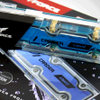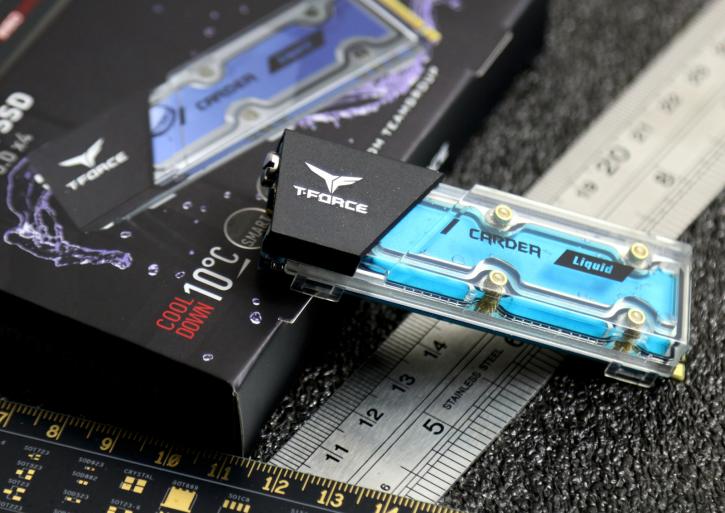Introduction
T-Force Cardea Liquid M.2 PCIe Gaming SSD
High-end M.2.Class SSD performance with a drop of water
High-performance NVMe SSDs tend to run hot. Ergo you have seen the manufacturers offer solutions with heatsinks, incl motherboard manufacturers making that even easier for you. Team Group takes it to the next level, as they are fitting the Cardea NVMe SSD with a heatsink holding liquid. That's right, that is passive liquid cooling for you.
Now despite using liquid cooling, this is a self-contained heatsink. It is placed on top of the SSD, and you do not plug it into an open-loop system. So yes, it is a slab of water with no active flow. It does, however, have two compartments and heat transfer will work as the mechanism for a bit of flow. Then the controller heats up, that warm-cool and will be pushed towards the memory in the 2nd chamber.
The specs are great as well, but will this unit deliver what it claims? SSD is based on that familiar Phison's PS5012-E12 controller and of course, has been fitted with 3D TLC written NAND from an undisclosed manufacturer (we assume Toshiba or Micron). The performance will vary bigtime depending on volume size. The 1 TB model of the T-Force Cardea Liquid reach up to 3400 MB/s sequential read speed, up to 3000 MB/s sequential write speed, up to 450K IOPS random read speed, and up to 400K IOPS random write speed. But as stated performance will vary on volume size and especially the write performance will be hit hard as the 512 GB version, for example, reached 2 GB/s writes.
- World’s first water cooling M.2 solid state drive.
- Superior performance – read speed up to 3400 MB/s which can improve the speed and performance of the overall system.
- Support latest NVMe1.3 protocol.
- Support S.M.A.R.T./TRIM technology – monitoring hard drive status efficiently and bring out its best performance.
- Structure design is a combination of craftsmanship and fashion.
- Product warranty – 3 years product warranty. Free technical support service.
- Taiwan Utility Model Patent No. M574264
The SSD is a Non-Volatile Memory Express (NVMe 1.3) M.2 form factor SSD, it has been fitted with new Vertically stacked NAND TLC. The performance numbers of a proper SATA3 SSD offers these days are simply excellent, but with the more niche NVMe SSDs you can easily quadruple performance, which offers serious numbers. The unit follows a smaller M.2 2280 form factor (8cm) so it will fit on most ATX motherboards capable of M.2 just fine. Anyway, wanna see how fast it really is? Next page and onwards into the review then.


